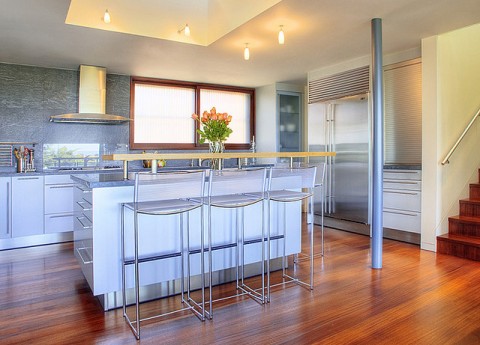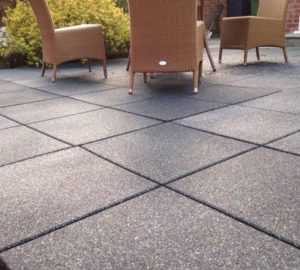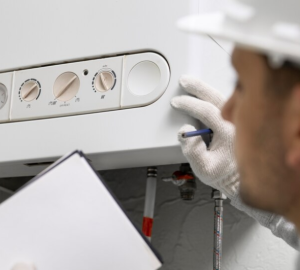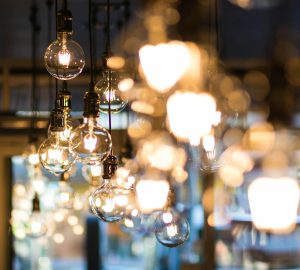When a home is renovated to a very high standard, the cost of heating it is a major consideration. Also, the heaters may spoil the scheme or take up valuable space in the rooms. So when designers set to work, heating is considered at a very early stage.
Lots of houses still use common forms of heating even though the scheme looks like something from outer space. We are going to investigate here, forms of heating that anyone can include in their designs when renovating their home to a high standard.
Insulation
Before we head off into the world of home heating, this is an appropriate time to talk about insulation. Heat is generated and wasted where the insulating properties of a home are poor. The most important insulation is that above your head. The loft is where most heat escapes. This can be easily remedied with layers of thermal insulation that is bought on rolls and easily installed. Place the layers at right angles to each other for best effect.
Cavity wall insulation, double glazing, and draught proofing are all important too if fuel bills are to be kept under control.
Night Storage Heaters
Back in the 1980’s and 90’s, there were plenty of television advertisements promoting the benefits of Economy 7, and night storage heaters. They are not so popular these days but are still used and installed in new properties where there is no gas supply.
The idea behind storage heaters is that they use electricity during the hours of low demand, at night, to ‘charge’ them up. Economy 7 is the tariff that reduces the price per unit for the seven hours when heat is stored. The electricity meter for homes using the Economy 7 tariff will have two dials on it, and a little pointer that indicates which one is being used. At night, the meter switches to the cheap tariff and the appliances jump into action and start heating up. The heaters are full of bricks which provide a thermal mass to store the heat. In the morning, the meter switches to the daytime tariff and the heaters switch off. They are now full to capacity, and the heat is expected to last until the next night when they begin charging again. There is a thermostatically controlled flap on top of the heater which will open to allow more heat to escape from the thermal mass if the room begins to cool and close when the room is warm.
Storage heaters are easy to install, with minimal disruption to the home. Even though they run on the cheap tariff, they are a notoriously expensive method for heating a home. They often go cold before the evening too. The heat is not instant so if a day turns cold you cannot simply turn them on and expect them to work. Storage heaters would be my last choice for heating a home.
Real Fire
There is nothing like the flicker of a real flame for creating a relaxed atmosphere. Designers incorporate real fires into living room schemes wherever possible. Fossil fuel or wood burning stoves are a very popular feature this decade and, if fuel bills continue to rise, they will become even more so. Many people are under the impression that living in a smokeless zone means that they cannot burn fossil fuel or wood. This isn’t the case. It does mean, however, that the appliances used must be on an approved list. Your sales showroom will be able to advise you in these matters. Of course, solid fuel heating has the advantage that it can continue to be used should the gas or electricity supply fail, as was the case for many people last winter, when the storms affected supplies for weeks.
Underfloor Heating
Underfloor heating is, without a doubt, the most effective kind there is. Heat rises and by putting the source underfoot, every part of the person and room feel the benefit. There are two forms of underfloor heating.
- Electrical. The electrically powered underfloor heating is the most expensive for to run. It works by burying an electric element in the floor which then heats up. The floor acts as a thermal mass and holds the heat. The elements use a lot of electricity and this method is often cost prohibitive.
- Hot water. The best form of underfloor heating makes use of hot water. The pipes are buried in the floor and heated by a boiler. The floor warms up and affects the temperature of the whole room. There is a room thermostat and another on the boiler which controls the temperature of the water running through the pipes.
Underfloor heating is particularly suited to contemporary room design where clean lines must not be interrupted. It is also well suited to places where there is no available wall space, such as kitchens.
Central Heating
Central heating is the most common in homes today. There is a boiler that heats water, which in turn is pumped around the home to radiators in each room. The radiators act as heat exchangers and keep the room warm. Individual thermostats fitted to radiators in each room help to keep costs down, in addition to the main thermostat.There are modern radiator designs to suit every style of room so a solution can be found for most interior design schemes. In a narrow spot, for example, a very tall contemporary radiator can be fitted. The radiators look so good that they often become a feature in their own right. The central heating boiler is usually fired by gas, but in remote areas where there is no supply, oil tanks can be installed. Oil fired central heating works just as well as gas. Central heating is more flexible than most other systems as it gives instant heat when required.
Portable Heaters
Electric fan heaters, convector heaters, and oil filled radiators are the most expensive form of heating by far. They serve a purpose where needed but should not be used as a permanent form of heating in the home if it can be avoided.
So, if you are thinking of renovating a room, or a whole building, give careful thought to the heating as part of the design. Perhaps the fuel supply available will determine the solution for you. There is sure to be a suitable form of heating to fit your scheme, whatever it may be.









